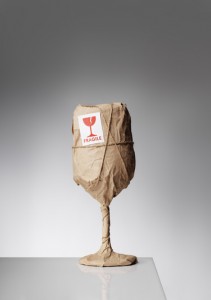August 28, 2014
How to Pack and Store Fragile Items
Categories: News Packing Tips
 Moving your items to a storage facility can be a stressful task, especially when you’re worried about the many delicate objects that could break in the process. Take your time and follow these steps to properly pack and store fragile items.
Moving your items to a storage facility can be a stressful task, especially when you’re worried about the many delicate objects that could break in the process. Take your time and follow these steps to properly pack and store fragile items.
First, purchase the supplies you need to get started. You’ll need boxes, packing tape, Sharpie markers for labeling, old newspaper or rolls of brown paper, and bubble wrap or packing peanuts. If you want to be extra cautious, you can purchase boxes made specifically for packing certain items, such as ones that include slots for things like mugs and glassware. You can also just place cardboard dividers inside a box to create your own slots. Using boxes with handles is recommended for easier lifting. Before you purchase boxes, turn toward your friends or visit local stores and ask if they have any boxes they can give you for free.
Next, sort out the items that will be packed together. If you can, pack similar items together, like glassware with mugs and a DVD player with a radio. Pack smaller, miscellaneous items in a box together. For very small fragile items that a box would be too large for, use small kitchen storage containers and line each container with bubble wrap or newspaper.
Before you start packing, make sure the bottom of each box is securely sealed. Prepare each box by filling the bottoms with balled up newspaper, bubble wrap, or packing peanuts. Then, wrap each item individually in newspaper, bubble wrap, or brown paper. You’ll want to avoid using newspaper with certain items like fine china as the print on the newspaper can rub off onto it. You can substitute newspaper for a roll of brown paper. Pack multiple layers of glassware safely by wrapping and packing the first layer, placing a layer of cardboard on top of it, and beginning the process again with a new layer.
Once all your items are properly wrapped, begin packing by placing the heaviest items in the box first and working your way up to the lightest items. When all of your items are packed, fill in any empty space in between the items with packing peanuts or balled up newspaper to eliminate any wiggle-room. You want to completely fill each box as too much unfilled space can create a greater opportunity for objects to move around and break.
Keep in mind that certain items should be packaged differently than others. Electronics are best packed in their original packaging but, if you cannot locate it, a box a little bit larger than the item will suffice. First, wrap the item in bubble wrap and then pack it into a box. TVs are also best stored in their original boxes but try to find one your TV will fits well into if you can’t locate the original. You’ll want to wrap the TV in bubble wrap before sliding it into its box. When packing mirrors and framed pictures, securely wrap each item individually in bubble wrap and secure with tape or wrap in moving blankets.
After all of your items are packed up, seal every box carefully and completely. Tape down the center and then tape across. Label each box right after sealing it. You don’t want to seal all the boxes and forget what items are contained in each. Write “FRAGILE” in large lettering on each side of every box. You can also write the contents of the package such as “fine china” or “electronics” and include the location of the contents such as “kitchen” or “living room” to make transporting each box to their correct destination quicker and easier when the time comes.
Now it’s time to store your packaged items in a storage unit. If you must stack boxes, make sure the boxes being stacked on top of one another are of equal sizes to avoid an imbalance. You also want to stack lighter boxes on top of heavier ones. Keep each stack from growing overly high to lessen the likelihood of it toppling over. Framed pictures and mirrors should be stored upright, not lying flat. Finally, drape a sheet over your packages to prevent potential water damage.



